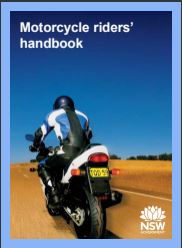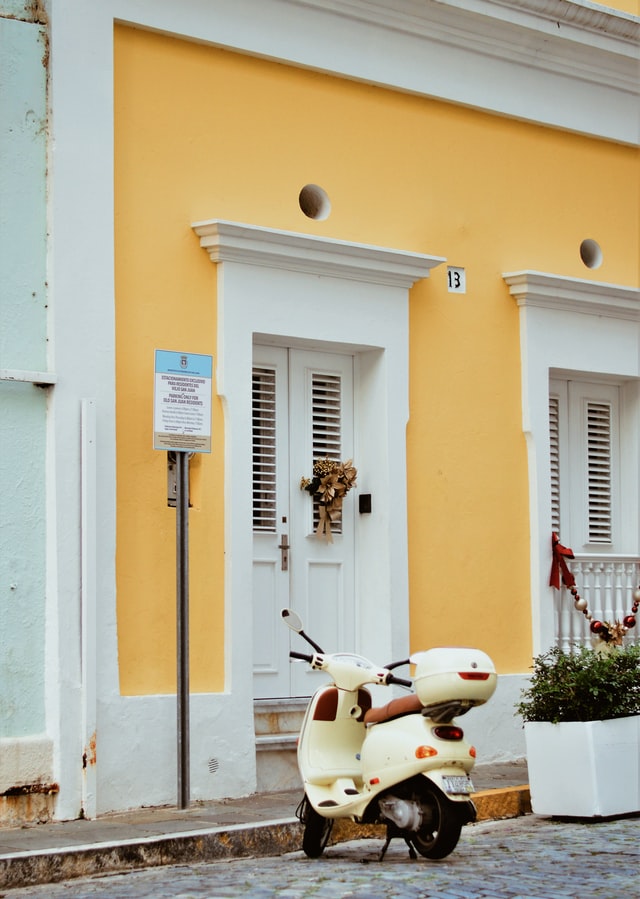Looking to get your NSW motorcycle learners licence soon? We’ll walk you through the steps you need to follow. The process is designed to teach you how to be a better motorcyclist and keep you and others on the road safe.
You don’t need to have ridden a motorcycle before or need any gear to start the first part of the process to see motorcycling is for you.
Before you know it, you’ll be on the back of your bike.
So, rev up and let’s get started.
Are you eligible for a NSW motorcycle learners licence?
First, let’s check if you meet the eligibility to get your motorcycle licence.
- You will need to be at least 16 years and 9 months before you can be issued with a motorcycle learner licence.
- Live in NSW.
- Need an NSW drivers licence OR hold a RMS customer number. You can apply for a RMS customer number at any Service NSW centre, showing your Full Proof of Identity (POI).
You will need to have a think about whether you want to obtain an automatic or manual motorcycle licence. Most scooters have an automatic transmission but not the traditional automatic in other vehicles. Scooters have a continuously variable transmission (CVT) which works a little differently, but you will not need to press the clutch or make gear shifts while riding.
The riding skills you need to start with.
You don’t need to own a motorcycle much less have sat on the back of a motorcycle, so this shouldn’t stop you from obtaining your motorcycle licence.
However, there are some key skills which will help make the process that much easier –
Good balance – If you do not know how to ride a bicycle or struggle to stay balanced on a bicycle you may find riding a motorcycle challenging. Practice your bicycle skills until you are confident, as this will make a difference to your experience in getting your motorcycle licence.
Able to maintain concentration – riding a motorcycle requires a high degree of concentration. Your safety and survival depend on it. Fatigue, drugs and alcohol can all affect your concentration.
Ready to start to get your NSW motorcycle learners licence?
Here are the steps –
Step 1: Book a pre-learner course with a registered rider training provider
Call or book online through a registered rider training provider, using your driver’s licence or RMS customer number. These training organisations provide courses in various locations across NSW and some facilities provide weekend courses if you find getting spare time during the week difficult.
Your pre-learner course runs over two consecutive days for 3.5 hours on each day.
There are various locations for motorcycle training courses around NSW for your convenience. Here is the list of course providers and their locations.
At the time of booking, you will need to pay for the course, so have your credit/debit card ready.
Don’t be nervous, as this basic training course assumes you have never ridden a motorcycle before.
What if there is no pre-learner course near me?
If you live in an undeclared area – this is where a pre-learner course is unavailable near you – you have two options. Travel to a declared area and complete their pre-learner course or you can apply to complete the RMS computer-based driver knowledge test. The RMS can advise you if you live in an undeclared area.
Here is the list of the current locations of rider training centres to find the nearest one to you.
What do I learn in the pre-learner course?
During the course you will spend time on the back of a motorcycle and in the classroom. You will learn the basics of operating a motorcycle at low speed and drilling of the safety aspects such as head checks. On the second day there is revision of the first day’s skills, then a range of typical traffic scenarios such as stopping, indicating and moving off at intersections.
You will be taught important motorcycle riding skills and bike handling skills around a small motorcycle course –
- How to get on and off the motorcycle safely
- Manoeuvring and cornering
- Braking
- Clutch control
- Gear changes
At the beginning of the classroom sessions, your trainer will go through how the course works and what the criteria are in receiving your Certificate of Competence. You will also learn about protective clothing, applying the principles of roadcraft such as, observation, slow down and buffering. You will also learner the five most common motorcycle situations you may find yourself in. Your course instructor will go through what you need to do after successfully completing the course.
What you need to bring to the pre-learner course –
Your course trainer will provide a small motorcycle, as well as helmet and gloves. You will need to wear long pants, sturdy jacket and strong enclosed footwear to protect your body. If you do not arrive with the correct protective gear, you will be turned away from attending the course.
Ensure you are protected and comfortable so you can move well while riding. Don’t forget to bring wet weather gear, sunscreen and water, as the training course will continue regardless of the weather.
Check with your training provider if they require you to bring anything else.
At the end of the course, it is a pass/fail in ALL competencies and skills. When you pass, you will be given a Certificate of Competence, to advance to the next stage to getting your motorcycle licence.
However, if you do fail, the riding training can provide extra coaching to help get your skills to a pass.
Step 2: Rider Knowledge Test – Getting your motorcycle L’s
The next step is to book in for your motorcycle rider knowledge test at a Service NSW centre.
You can book online, make an appointment by calling 13 22 13 or visit your local Service NSW centre to make the appointment.
Note – Your Certificate of Compliance is valid for 3 months so you will need to pass your knowledge test before it expires.

Once you have booked the test, download the Road User Handbook as well as the Motorcycle Riders Handbook to revise the road rules and safe motorcycle riding.
During the knowledge test you will be asked 45 questions from the information in this handbook. The test is multiple choice – for each question, you will be given three options to choose from.
The RMS also provides practice tests to help familiarise yourself with the test and the types of questions they may ask. You can download their app or go to a link to complete their practice tests.
What you need to bring to your Rider Knowledge Test
You will need –
- Your pre-learner Certificate of Competence
- Your proof of identity documents
Ensure you leave enough time prior to your booked test to complete the learner licence application form you will be handed at the RMS. This needs to be completed before you sit your test.
In summary –
To get your learner rider licence you must –
- Pass an eyesight test
- Pass the rider knowledge test
- Pay the licence fee
When you have passed this test, you will receive your NSW motorcycle learners licence!
Your learner licence is valid for 12 months.
Step 3: Practice riding on your motorcycle learner licence
It’s time to gear up!
Motorcycle – Choose the type of motorcycle to start practicing your riding skills. There are restrictions on the size of the bike you can ride.
Remember if you did your pre-learner course on an automatic bike, your conditional learner rider licence states you may only ride an automatic cycle. This restriction is lifted when you have your full motorcycle licence, when you can ride a motorcycle or scooter with a clutch and gears. We advise you check with the RMS as rules can change.
A learner motorcyclist must only ride a motorcycle with –
- an engine capacity up of 660ml or less
- a power-to-weight ratio of 150 kw per tonne or less
- a power up to 25kW or less for electric motorcycles
Here is the list of approved motorcycles. They must not be modified from the manufacturers specific standards.
Helmet – You must wear an Australian Standards or UN ECE 22.05 approved helmet, fitted for your head. Do not borrow a helmet as they may be dangerous as well as not correctly fitted for your head.
Here is some information to help you with your helmet –
Which helmets are approved in Australia?
Clothing – you should wear the correct bike clothes to protect your body in the case of an accident. This includes bike pants, jacket, boots and gloves.
The Motorcycle Clothing Assessment (MotoCAP) website tests gear using rigorous, scientific methods to provide ratings for motorcyclists to choose the right gear with the best protection and comfort for their ride.
Practice riding – during your learner period, you should practice in a wide range of riding situations, such as riding during the day, night, dusk, dawn, in all types of weather conditions as well as under numerous road conditions – heavy traffic, highways and country roads. You are looking to gain as much experience as possible to ensure your safety and prepare you for getting your P motorcycle licence.
A few tips to get your confidence riding a motorcycle –
- Ride defensively. Pay attention at every single intersection, even side entrances like laneways, driveways, petrol stations, and carparks. Watch for cars pulling out of a parking spot.
- Do not ride in anyone’s blind spot.
- Where you look is where the bike will go. Look through a corner, not down at the ground in the middle. Look into the distance and monitor what is going on around you and any potential dangers.
- Slowly increase your motorcycle riding skills. The idea here is to build up your confidence and you do this by gathering new riding skills.
The more you practice riding, the more confident you will be as a rider and better prepared for getting your motorcycle P licence.
Good luck and let us know any tips you have for others considering getting their motorcycle licence.


What do I have to do if my L’s expires and I haven’t booked a Ps test yet?
You’ll have to go through the entire process again.